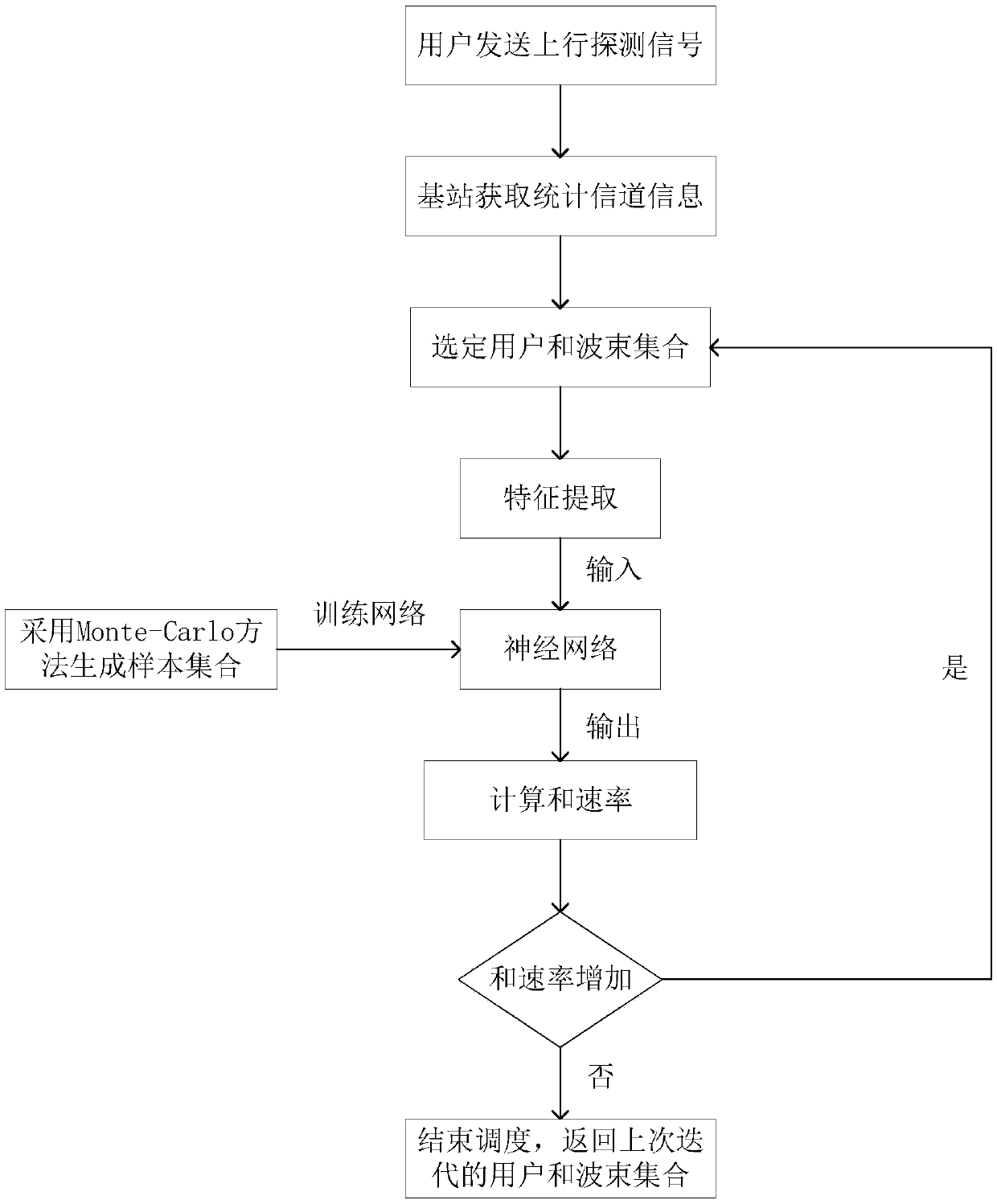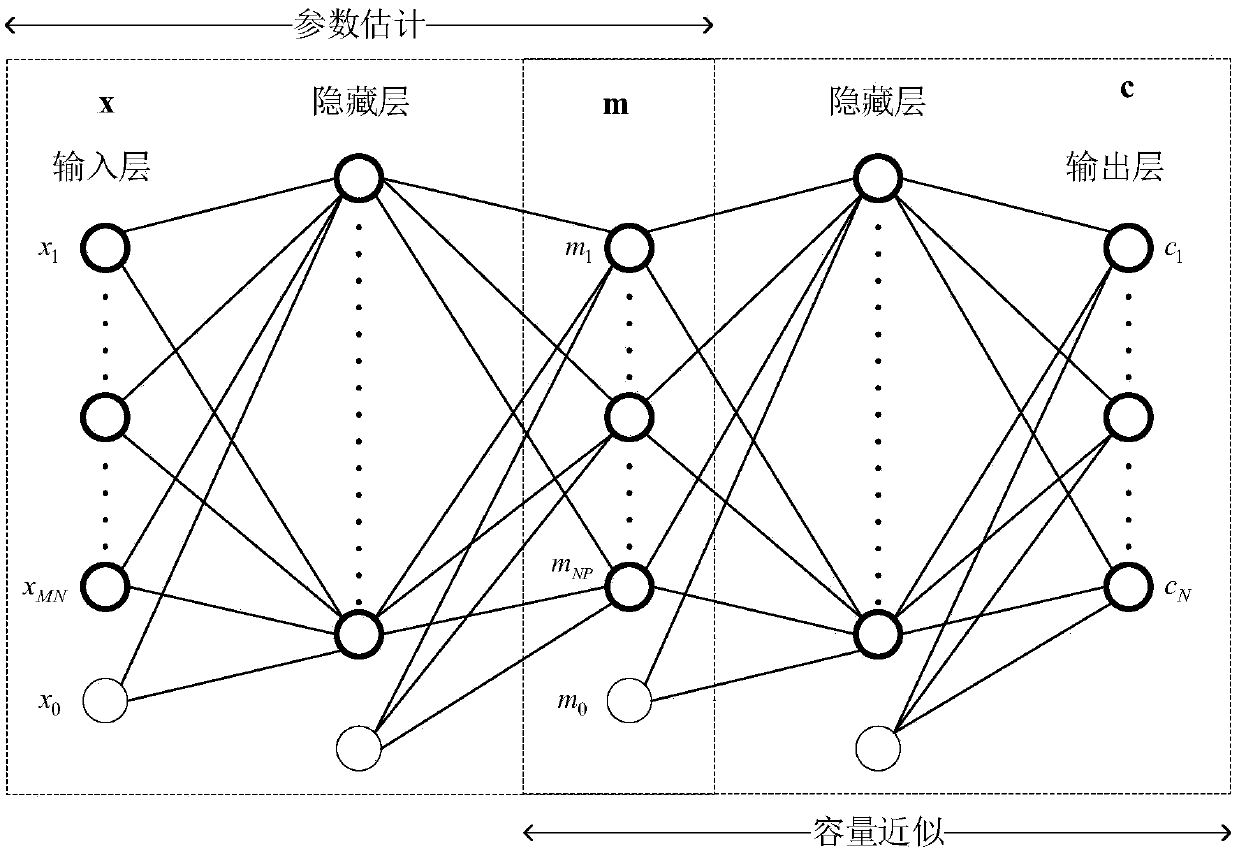A machine learning assisted large scale MIMO downlink user scheduling method
A machine learning and user scheduling technology, applied in radio transmission systems, electrical components, transmission systems, etc., can solve problems with high computational complexity and high complexity
- Summary
- Abstract
- Description
- Claims
- Application Information
AI Technical Summary
Problems solved by technology
Method used
Image
Examples
Embodiment Construction
[0069] The technical solution of the present invention will be further introduced below in combination with specific embodiments.
[0070] This specific embodiment discloses a machine learning-assisted large-scale MIMO downlink user scheduling method, such as figure 1 shown, including the following steps:
[0071] S1: The base station obtains the eigenmode energy coupling matrix in the eigendirection through the uplink sounding signal sent by the user;
[0072] S2: The base station uses the eigenmode energy coupling matrix to assist in the calculation of the sum rate under various user and beam combinations through the method of machine learning;
[0073] S3: Use the greedy algorithm to implement user scheduling with the maximum rate criterion, and obtain the optimal user beam pairing combination.
[0074] The eigenmode energy coupling matrix in step S1 is calculated by formula (1):
[0075]
[0076] In formula (1), is the eigenmode energy coupling matrix of the kth us...
PUM
 Login to View More
Login to View More Abstract
Description
Claims
Application Information
 Login to View More
Login to View More - R&D
- Intellectual Property
- Life Sciences
- Materials
- Tech Scout
- Unparalleled Data Quality
- Higher Quality Content
- 60% Fewer Hallucinations
Browse by: Latest US Patents, China's latest patents, Technical Efficacy Thesaurus, Application Domain, Technology Topic, Popular Technical Reports.
© 2025 PatSnap. All rights reserved.Legal|Privacy policy|Modern Slavery Act Transparency Statement|Sitemap|About US| Contact US: help@patsnap.com



